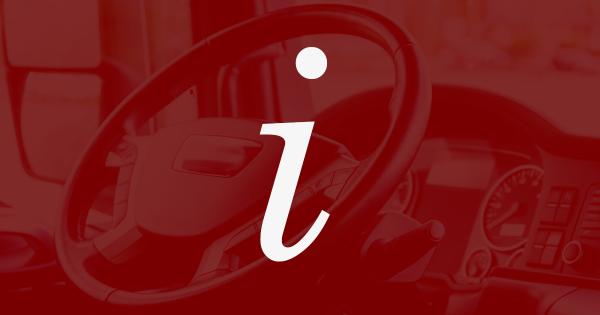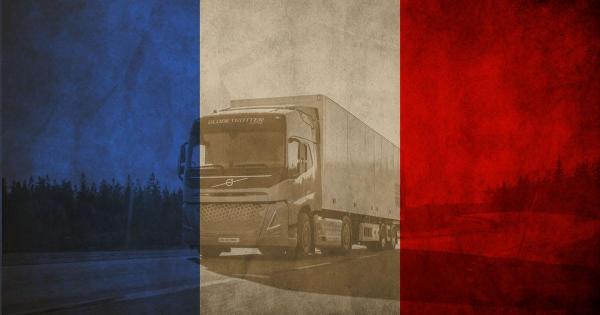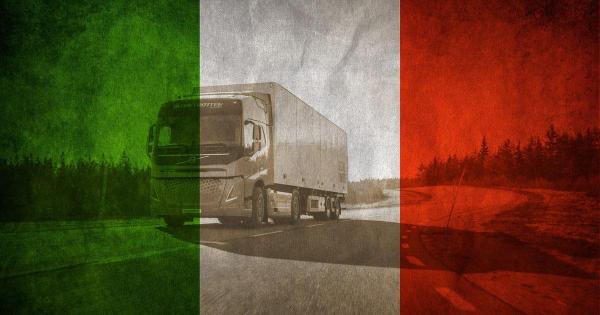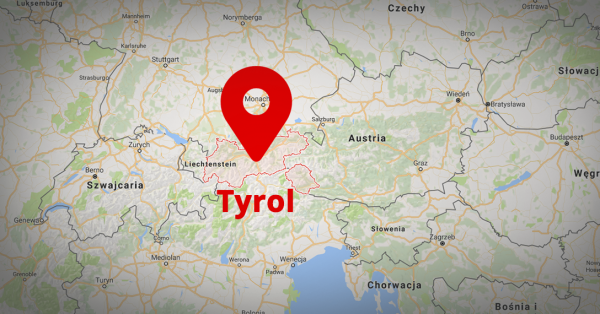
Alternating one-way traffic and closures of the Fréjus tunnel
Owing to scheduled safety improvement work traffic through the Fréjus Road Tunnel between Modane in France and Bardonecchia in Italy under Col du Fréjus in the Cottian Alps will be disrupted on several occasions throughout June.
⏩Days with alternating one-way traffic: 4, 5, 6, 7, 8, 11, 12, 13, 14, 15, 18, 19, 20, 21, 25, 26, 27, 28, 29 except for the following nights (from Sunday to Monday): 9/10, 16/17, June 30/July 1.
⏩The tunnel will be completely closed from 11:00 PM on Saturday, June 22, to 5:00 AM on Sunday, June 23.

Serious disruptions in French ports
The French trade union CGT Ports and Docks has announced a strike which will affect all major French seaports during several days in June.
❌ Four-hour work stoppage between 10:00 AM and 4:00 PM (the exact times may vary depending on the port): June 4, 6, 10, 12, 14, 18, 20, 24, 26 and 28.
❌ 24 work stoppage: June 13, 21 and 25.
❌ Dead port day on June 7 (access to port areas/terminals will be blocked).
Port workers are protesting against the government’s pension reform, which would allow them to retire two years earlier. If the workers do not reach an agreement with the government, they intend to continue their protest in July, which are likely to disrupt freight traffic in French seaports.

Road hauliers can apply for an exemption from the driving ban in France
June 6 marks the 80th anniversary of the D-Day landings in Normandy.
In view of the planned celebrations, the authorities of the Calvados department have decided to set up a Regulated Traffic Zone (zone de circulation régulée – ZCR), which will extend to the north and west of Caen, from the RN13 to the sea.
The zone will only be activated on 6 June, from 6am until 8pm.
Vehicles that have to enter the zone can only do that if they have a special sticker. You can apply for a ZCR sticker by e-mail by sending your request to: [email protected]
An application for a derogation from the driving ban for vehicles with a GVW of more than 7.5 tonnes
A map of the Regulated Traffic Zone (ZCR) and information about ZCR stickers

Italy: two days with an additional driving ban on the A22
Because of upcoming public holidays in Austria and Germany, the Prefecture of the Autonomous Province of Bolzano has introduced a driving ban for vehicles with a GVW over 7.5 tons on the northbound carriageway of the Brenner motorway (A22) between Vipiteno and the border with Austria (northbound) on the following days:
- ▶️ Monday, May 20, from 00:00 to 10:00 PM
- ▶️Thursday, May 30, from 00:00 to 10:00 PM
Vehicles travelling along this section when the ban is in effect are obliged to park at the Sadobre parking lot in Vipiteno or at other parking lots indicated by Autobrennero S.p.A.
Vehicles carrying perishable food products, farm animals or vehicles involved in combined road-rail transport with a railway reservation are excluded from the ban.

Hungary: a last-minute change in HGV driving bans
The Hungarian Ministry of Transport has partially suspended the HGV driving ban during the upcoming long weekend by establishing so-called \”time windows\” when the movement of HGVs with a MAM above 7.5t is allowed.
The weekend driving ban will be in force for a total of 72 hours but will be suspended from 10:00 PM to 6:00 AM, as indicated below:
❌ March 29 (Friday) from 6:00 AM to 10:00 PM
❌ March 31 (Sunday) from 6:00 AM to 10:00 PM
❌ April 1 (Monday) from 6:00 AM to 10:00 PM.
In a statement, the Ministry has informed that the partial derogation has been introduced to ensure an uninterrupted supply of goods and meet an increased demand. Unfortunately, the decision was announced just a few hours before the time the regular holiday driving ban should come into effect this evening.

Austria: spring HGV driving bans on the A10
Based on forecasts of traffic intensity, the Austrian Minister for Climate Protection, Environment, Energy, Mobility, Innovation and Technology has decided to introduce a driving ban for transit HGV traffic during three weekends following Pentecost until the beginning of June and during one weekend in June (June 21 and 22).
The ban applies to vehicles, articulated vehicles or veciles with trailers, whose GVW exceeds 7.5 t travelling along the A10 motorway
❌ on Fridays from May 17 to May 31 and on Friday, June 21, from 1:00 PM to 7:00 PM.
❌ on Saturdays from May 18 to June 1 and on Saturday, June 22, from 7:00 AM to 3:00 PM.
1. on the southbound carriageway in the direction of Villach between the Salzburg intersection (where the A10 branches off the A1) and the Pongau intersection, if the destination of the journey is in Italy or Slovenia or has to be reached via Italy or Slovenia and
2. on the northbound carriageway in the direction of Salzburg, between the Rennweg junction and the Golling junction, if the destination of the journey is located in Germany or the Czech Republic, or has to be reached via Germany or the Czech Republic.

Hungary: an advance notice about a change in the HGV driving ban
In response to a request from the Association of Hungarian Road Transporters (MKFE), the Ministry of Transport has partially suspended the HGV driving ban during the upcoming long weekend (Pentacost) by establishing a ‘time window’ when the movement of HGVs with a MAM above 7.5t is allowed
As a result, the HGV driving will not start at 10:00 PM on Saturday, May 18, as would normally be the case, but at 6:00 on Whit Sunday, May 19 and will last until 10:00 PM, when the second time window will start until 6:00 AM on Whit Monday. The HGV ban will then be in effect all day until 10:00 PM.
In other words, the HGV driving ban applies on:
⏩ May 19 (Whit Sunday) from 6:00 AM to 10:00 PM,
⏩ May 20 (Whit Monday) from 6:00 AM to 10:00 PM,
Thanks to the relaxation HGV drivers have two 8-hour night breaks in the driving ban, during which they can continue driving instead of having to wait in the parking lot from Saturday to Monday evening. More information about HGV driving bans and derogations from these bans that are in effect in different countries can be found at www.trafficban.com.

Hungary: New night time window for trucks for the May 1 holiday
The Hungarian Ministry of Transport has partially suspended the HGV driving ban on May 1 by establishing a ‘time window’ when the movement of HGVs with a GVW above 7.5 t is allowed.
This means that the HGV driving ban will NOT start at 10:00 PM on Tuesday, April 30, but at 06:00 AM on Wednesday, May 1. In a statement, the Ministry has informed that the partial derogation has been introduced to ensure an uninterrupted supply of goods and meet an increased demand.

Slovakia: derogation from the HGV driving ban on May 1 and 8
At the request of ČESMAD Slovakia, the Slovakian Presidium of the Police Force has granted a general exemption from the driving ban on Wednesday, May 1 and 8, in connection with the upcoming Easter holidays.
The derogation applies to all heavy goods vehicles traveling on motorways, roads for motor vehicles, 1st class roads and roads used by international traffic, entering Slovakia and travelling to destinations (e.g. the company’s base or the place of unloading) located in Slovakia.

Tirol: 40 days with limited cross-border HGV traffic in 2024
The practice of limiting HGV traffic has been criticized on numerous occasions by international organizations, but the Tirol authorities remain adamant that the measure is necessary. The calandar of HGV restrictions for the second half of 2024 has just been published.
As in previous years, the Austrian authorities have set up a checkpoint on the A12 near Kufstein Nord in the direction of Innsbruck. On specific days listed in the restriction schedule (below), starting from 05:00 AM the police will slow down HGV traffic and, if necessary, will stop it in order to make sure that only about 300 lorries arriving from Germany are allowed to cross the border per hour.
There were 41 such days last year. This year, 24 days with restrictions have been planned in the first half of theyear, and 16 in the second half. The calendar has been established after an analysis indicating the high likelihood of heavy HGV traffic along the Inn Valley on these days.
HGV traffic restrictions in Tirol in 2024:
➡ March 28 (Thursday)
➡ April 26 (Friday)
➡ May 2 (Thursday)
➡ May 3 (Friday)
➡ May 6 (Monday)
➡ May 7 (Tuesday)
➡ May 8 (Wednesday)
➡ May 10 (Friday)
➡ May 17 (Friday)
➡ May 18 (Saturday)
➡ May 21 (Tuesday)
➡ May 22 (Wednesday)
➡ May 23 (Thursday)
➡ May 27 (Monday)
➡ May 28 (Tuesday)
➡ May 29 (Wednesday)
➡ May 31 (Friday)
➡ July 1 (Monday)
➡ July 8 (Monday)
➡ July 15 (Monday
➡ July 22 (Monday)
➡ July 29 (Monday)
➡ October 4 (Friday)
➡ October 28 (Monday)
➡ November 5 (Tuesday)
➡ November 6 (Wednesday)
➡ November 13 (Wednesday)
➡ November 20 (Wednesday)
➡ November 27 (Wednesday)
➡ December 3 (Tuesday)
➡ December 4 (Wednesday)
➡ December 10 (Tuesday)
➡ December 11 (Wednesday)